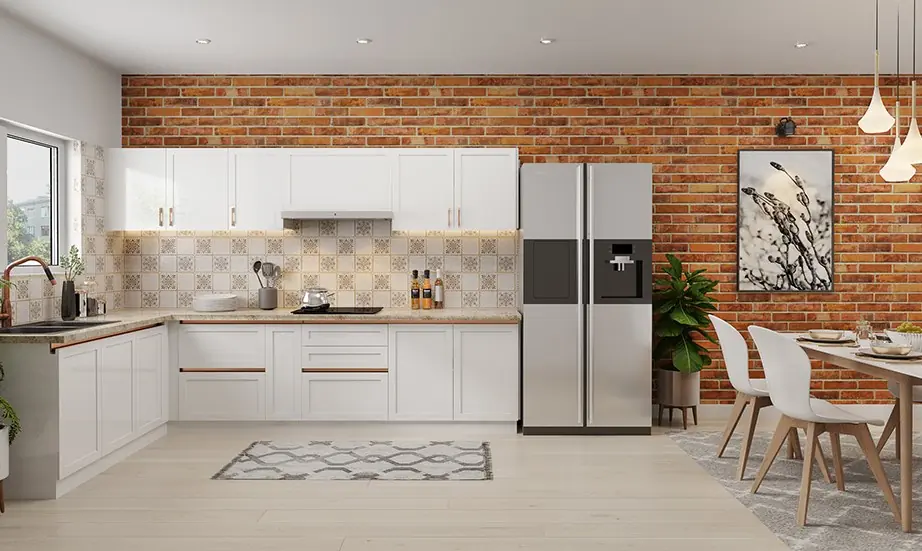An Introduction to DIY Home Composting
Welcome to the ultimate guide on DIY home composting, where you’ll discover everything you need to know about creating nutrient-rich soil for your garden. As a seasoned composting guru, I’m excited to share my knowledge and expertise with you. Composting is not only an environmentally friendly practice but also a great way to improve your soil’s health and fertility.
Before we dive into the details, let’s take a moment to visualize the lush green garden you dream of having. Imagine the satisfaction of growing your own organic vegetables and beautiful flowers, all nurtured by the self-made compost you created. With DIY home composting, this dream becomes a reality, and I’m here to guide you through the process.
Choosing the Right Composting Method
1. Traditional Composting Bins
Traditional composting bins are an excellent choice for beginners due to their simplicity and low cost. These stationary containers allow for easy access and management of the composting materials.
When setting up a traditional composting bin, ensure that it has proper ventilation and drainage. This helps to prevent odors and promotes the breakdown of organic matter. Additionally, consider the bin’s size to ensure it can accommodate your composting needs.
2. Composting Tumblers
If you prefer a more hands-off approach to composting, a composting tumbler might be the perfect option for you. These rotating containers make turning the compost easier and faster, enhancing the decomposition process.
Composting tumblers are ideal for smaller spaces such as balconies or urban gardens. They provide excellent aeration and allow for quicker composting. Just give the tumbler a few spins every few days, and you’ll have rich, dark compost in no time.
3. Vermiculture – Worm Composting
Vermiculture, also known as worm composting, is a method that utilizes specific species of worms to break down organic matter. This process produces nutrient-rich vermicompost, often referred to as “black gold” among gardeners.
Worm composting is perfect for those living in apartments or urban areas with limited outdoor space. The worms quickly transform kitchen scraps into high-quality compost, making it an excellent choice for anyone looking to reduce their carbon footprint and create sustainable soil.
Composting Containers and Tools
1. Choosing the Right Composting Container
When selecting a composting container, consider factors such as size, accessibility, and durability. Whether you opt for a traditional bin, a tumbler, or a worm composting setup, ensure that it suits your space and lifestyle.
Remember, the container’s design and functionality play a crucial role in maintaining proper airflow and moisture levels, which are essential for successful composting.
2. Useful Composting Tools
While composting can be done with minimal equipment, a few tools can make the process more efficient and enjoyable. Here are some tools that can come in handy:
- A compost thermometer to monitor the temperature of your pile.
- A pitchfork or compost aerator for turning the pile and promoting air circulation.
- A kitchen scrap container to collect daily compostable materials.
- A garden hose or watering can to maintain proper moisture levels.
The Benefits of Compost for Soil Health and Gardening
Compost is often referred to as “black gold” for its incredible benefits to soil health and gardening. Let’s explore some of the advantages:
1. Nutrient-Rich Soil Amendment
Compost enriches the soil by providing essential macronutrients, micronutrients, and organic matter. These nutrients feed plants, fostering healthy growth and strong root development.
Additionally, compost enhances soil structure, improving drainage in heavy soils and water-holding capacity in sandy soils. This results in a balanced, loamy soil texture that promotes robust plant growth.
2. Natural and Sustainable Fertilizer
Unlike synthetic fertilizers, compost is natural and sustainable. It releases nutrients slowly, reducing the risk of nutrient runoff that can harm ecosystems and water bodies. Compost enriches the soil without causing imbalances or environmental damage, making it an eco-friendly choice for gardeners.
3. Soil Erosion Prevention
By adding compost to your garden beds, you can help prevent soil erosion. Compost creates a protective layer that reduces water runoff and allows for better water absorption. This helps keep your soil in place during heavy rainfalls or watering sessions, preserving its quality and preventing erosion.
4. Increased Soil Biodiversity
Compost introduces beneficial microorganisms, fungi, and bacteria into the soil. These microscopic organisms break down organic matter, making nutrients more accessible to plants. The presence of a diverse ecosystem in the soil contributes to plant health, disease resistance, and overall ecological balance.
Common Mistakes to Avoid in Composting
1. Don’t Start Too Small
One of the most common mistakes beginners make is starting with a small compost pile. It’s essential to have enough materials to generate sufficient heat and maintain the optimal composting environment. Aim for a pile with a minimum size of three feet in height and width.
2. Keep Things Moist
Compost piles should be moist, resembling a well-wrung sponge. However, excessive moisture can lead to unpleasant odors and slow down the decomposition process. Regularly monitor moisture levels and adjust accordingly to maintain the perfect balance.
3. Don’t Depend on One Material
A successful compost pile requires a healthy mix of brown and green materials. Brown materials, such as dried leaves or wood chips, provide carbon, while green materials, like kitchen scraps or grass clippings, offer nitrogen. Aim for a 3:1 ratio of carbon to nitrogen to ensure proper decomposition.
4. Don’t Get Overwhelmed
Composting may seem complex at first, but don’t let it overwhelm you. Remember, nature has been composting for millions of years without human intervention. Start small, learn from your experiences, and don’t be afraid to make adjustments along the way.
Inspiration: Success Stories Using Compost in Gardening
Now that you’re well-versed in DIY home composting, let’s explore some inspiring success stories of gardeners who have reaped the benefits of compost:
Homegrown Tomato Success Story
Tomatoes are a popular choice among home gardeners, and compost plays a significant role in their success. One gardener, Sarah, began incorporating compost into her soil and experienced remarkable results. The plants grew taller, produced more vibrant foliage, and yielded large, juicy tomatoes filled with flavor. Sarah’s homegrown tomatoes became the envy of her neighborhood!
A Detailed Table Breakdown of Composting Elements
Here’s a detailed breakdown of the essential elements required for successful composting:
| Element | Importance |
|---|---|
| Brown Materials | Provides carbon, aids in decomposition |
| Green Materials | Offers nitrogen, facilitates microbial activity |
| Air | Promotes aerobic decomposition, prevents odor |
| Moisture | Keeps compost pile hydrated, aids in decomposition |
| Microorganisms | Break down organic matter, release nutrients |
| Time | Allows for complete decomposition |
Frequently Asked Questions (FAQs) About DIY Home Composting
Q: Can I compost kitchen scraps like onion peels and coffee grounds?
A: Yes, kitchen scraps like onion peels, coffee grounds, and fruit/vegetable scraps are excellent additions to compost heaps. They provide valuable nitrogen and organic matter for decomposition.
Q: Can I compost meat and dairy products?
A: It is generally advised to avoid composting meat and dairy products, as they can attract pests and emit unpleasant odors. Stick to composting plant-based materials for optimal results.
Q: Should I cover my compost pile?
A: While it’s not necessary to cover your compost pile, doing so can help retain moisture and heat. Consider covering it with a tarp or straw during heavy rainfalls or colder months.
Q: How long does it take for compost to be ready for use in the garden?
A: The time required for compost to fully decompose varies depending on factors such as the materials used, composting method, and environmental conditions. In general, it can take anywhere from a few months to a year. Patience is key!
Q: Can I use compost for indoor plants?
A: Absolutely! Compost is beneficial for both outdoor and indoor plants. However, make sure the compost is fully decomposed before using it for indoor plants, as fresh compost can emit odor and may contain harmful pathogens.
Q: Can I compost weeds and diseased plants?
A: It’s best to avoid composting weeds that have gone to seed or plants affected by diseases. The high temperatures in a compost pile may not eliminate weed seeds or pathogens. To prevent spreading unwanted weeds or diseases, dispose of them in another manner.
Q: Can I compost pet waste?
A: It is generally recommended to avoid composting pet waste, such as cat or dog feces, as they can contain harmful pathogens. These pathogens may not be eliminated during the composting process and can pose risks to human health.
Q: What should I do if my compost pile smells bad?
A: An unpleasant odor from your compost pile indicates an imbalance in the composting process. Ensure that you have the right carbon-to-nitrogen ratio (3:1), maintain proper moisture levels, and turn the pile regularly to promote aeration. If the odor persists, avoid adding any more kitchen scraps until the balance is restored.
Q: Can I compost paper and cardboard?
A: Yes, paper and cardboard can be composted. Be sure to tear them into smaller pieces to accelerate decomposition. Avoid glossy or heavily colored paper, as it may contain harmful chemicals.
Q: How can I speed up the composting process?
A: To speed up composting, ensure that you have a balanced mix of green and brown materials. Chop the materials into smaller pieces to increase surface area, turn the pile regularly to provide aeration, and maintain adequate moisture levels. You can also use compost activators or layer the pile with finished compost to introduce beneficial microorganisms.
In Conclusion
Now that you’re armed with the knowledge and know-how of DIY home composting, it’s time to roll up your sleeves and get started. Remember, composting is a journey of continuous learning and experimentation, so don’t be discouraged by any initial setbacks.
If you still have questions or want to delve deeper into the world of composting, be sure to check out the related articles mentioned below. Happy composting, and enjoy the fruits of your labor in the form of flourishing gardens and vibrant plants!
To learn more about related topics, consider reading the following article:

